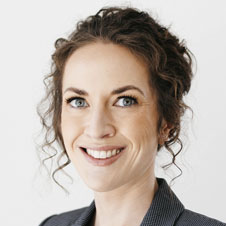After a University of Minnesota Medical School classmate died by suicide several years ago, Brianna Engelson, MD, began learning from friends that they, too, were struggling.
Within an hour of hearing the news, friends confided they had thoughts of suicide, felt depressed or believed an antidepressant could be beneficial. But they also shared that they weren’t going near a doctor with any of those concerns or for medication that could be helpful because the students feared repercussions to their careers.
In addition to a culture in medicine that traditionally has not supported medical students or physicians who talk about or seek help for their own mental health, Dr. Engelson realized that another secrecy driver was a question on the Minnesota Board of Medical Practice’s application for new or renewing physicians. The question asked: “Have you within the past five years been advised by your treating physician that you have a mental, physical or emotional condition, which, if untreated, would be likely to impair your ability to practice medicine with reasonable skill and safety?”
Dr. Engelson—now chief psychiatry resident at the University of Minnesota Medical Center—was angry and also felt a bit helpless as a medical student. But she was compelled to do something in the aftermath of a tragedy that should have never happened.
So Dr. Engelson joined with two of her medical school classmates—Jennifer Zick, MD, PhD, and Sameena Ahmed-Buehle, MD—and they set out to change the language on the application.
Working with the Minnesota Medical Association, Dr. Engelson and her colleagues did just that.
Minnesota is one of more than 20 states that has eliminated wording in their medical license applications that could make physicians hesitant to seek behavioral health care. Minnesota’s question now focuses on whether there is a current impairment, asking: “Do you currently have any condition that is not being appropriately treated which is likely to impair or adversely affect your ability to practice medicine with reasonable skill and safety in a competent, ethical and professional manner?”
But the work is far from done in Minnesota and elsewhere to ensure that physicians, medical students and residents and fellows are comfortable—and protected—if they seek the care they need.
Reducing physician burnout is a critical component of the AMA Recovery Plan for America’s Physicians.
Far too many American physicians experience burnout. That's why the AMA develops resources that prioritize well-being and highlight workflow changes so physicians can focus on what matters—patient care.
Changing the system, culture
During the 2024 AMA State Advocacy Summit, Dr. Engelson was part of a panel discussion that explored medical student and physician wellness.
Stefanie Simmons, MD, chief medical officer for the Dr. Lorna Breen Heroes’ Foundation, moderated the panel. Panelists included Abraham Segres, vice president of quality and patient safety and executive director for the Virginia Hospital & Healthcare Association Center for Healthcare Excellence, and Gregory Guldner, MD, MS, who is the vice president of academic affairs at HCA Healthcare Graduate Medical Education.
Panelists discussed some changes that are already taking place, including how HCA—the country’s largest health system—recently changed the questions about behavioral health that are asked on their credentialing applications and reference forms at 180 hospitals, 660 urgent care clinics and 152 ambulatory surgery centers. The change affected 40,000 physicians.
During the panel discussion, Dr. Guldner also talked about HCA’s program that essentially scheduled residents for therapy and told them they could opt out of it confidentially. That’s opposed to residents choosing to opt into therapy by, say, calling a phone number if they need help.
“We found a 350% increased use of psychotherapy when you do that,” Dr. Guldner said. “That tells you there’s this underlying need that’s just being kept down by lots of different barriers.”
Dr. Engelson said she would like to see credentialing changes in the many states that have yet to address it and would like to see more residency programs and medical schools adopt the idea of opt-out therapy. She encouraged medical students, residents and young physicians to push for change.
“When I started this process of advocating for a change to the licensing questions, I had no idea what I was doing,” she said. “I just knew that I cared a lot and that I was willing to be vocal about it.”




